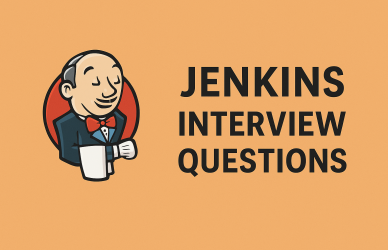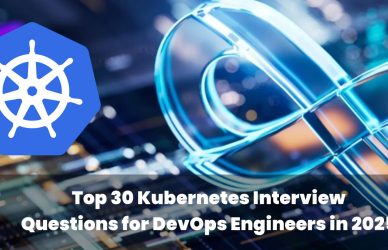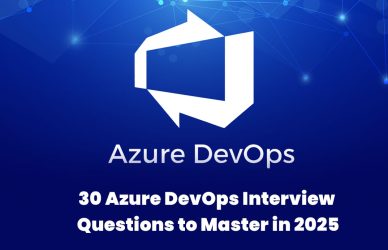Introduction: Cloud Architects Drive Business in the Cloud Era
By 2025, cloud architecture goes far beyond just infrastructure setup—it’s about business strategy, resilience, and innovation. Senior cloud architects are expected to design high-availability, cost-optimized, and secure systems across AWS, Azure, and GCP.
This complete guide is optimized for the keyword “senior cloud architect interview” and curated to help professionals tackle real-world challenges in high-level architecture roles.
Explore job listings and cloud architect roles at CloudDevOpsJobs.com.
Section 1: Cloud System Design Interview Questions
1. How would you design a serverless application on AWS?
- API Gateway for routing
- Lambda for compute
- DynamoDB or S3 for storage
- CloudWatch for logging and monitoring
- Secure with IAM and Cognito
2. Design a multi-region, highly available system.
- Route 53 with latency-based routing
- DynamoDB Global Tables or RDS cross-region replicas
- CloudFront for edge caching
- Health checks and failover logic
3. Build a scalable real-time analytics pipeline.
- Kinesis (AWS) or Pub/Sub (GCP) for ingestion
- Lambda (AWS) or Dataflow (GCP) for transformation
- S3, BigQuery, or Redshift for storage
- Visualization with QuickSight, Looker, or Grafana
4. What are the pillars of the AWS Well-Architected Framework?
- Operational Excellence
- Security
- Reliability
- Performance Efficiency
- Cost Optimization
- Sustainability
5. How would you migrate a monolith to microservices?
- Identify bounded contexts
- Use ECS, EKS, or GKE
- Route traffic with service mesh (e.g., Istio)
- Automate deployments via CI/CD pipelines
- Add centralized logging and monitoring
Section 2: Multi-Cloud Strategy and Security
6. What is your approach to multi-cloud architecture?
- Terraform and CI/CD for infrastructure abstraction
- Global DNS load balancing or service mesh
- Unified observability via Datadog, Prometheus, New Relic
- Centralized IAM, logging, and compliance
7. How do you enforce security in cloud architectures?
- Encrypt data in transit and at rest
- Use IAM roles, avoid long-term access keys
- Follow least privilege principle
- Use CSPM tools like Prisma Cloud, Wiz
- Conduct regular audits and pen tests
8. Describe your experience with Zero Trust Architecture.
- Every request is authenticated and authorized
- Context-aware policies and segmentation
- Use MFA, SSO, JIT (Just-In-Time) access
- Apply encryption and logging at all layers
9. How do you secure APIs in a cloud-native app?
- Use OAuth2, JWT, or API Gateway authorizers
- Apply rate limits, WAF, and IP filtering
- Log and audit all API access
10. How do you handle secrets management?
- Use Secrets Manager, Key Vault, or HashiCorp Vault
- Avoid hardcoding secrets
- Rotate credentials regularly
- Limit access via RBAC and fine-grained policies
Section 3: Cost Optimization and Performance
11. How do you monitor and optimize cloud spend?
- Tag resources and build cost allocation reports
- Use AWS Cost Explorer, Azure Cost Management
- Rightsize instances, use Spot or Savings Plans
- Schedule shutdowns for dev/test environments
12. What trade-offs do you make between cost and performance?
- Use auto-scaling instead of fixed sizing
- Move infrequently accessed data to cold storage
- Use serverless for bursty workloads
- Cache with CloudFront, Redis, or Memcached
13. How do you reduce latency in global services?
- Use CDNs and multi-region deployments
- Implement edge compute with Lambda@Edge or Cloudflare Workers
- Optimize queries, reduce hops, and enable compression
14. What is auto-scaling and how is it implemented?
Auto-scaling automatically adjusts resources based on demand.
Use:
- AWS ASG, Azure VMSS, GKE HPA
- Trigger scaling via CPU, memory, or custom metrics
15. When should you use reserved vs. spot instances?
- Reserved Instances: predictable, long-running workloads
- Spot Instances: batch processing, CI/CD tasks, stateless apps
- Use EC2 Fleet or Azure Spot Scale Sets for cost control
Section 4: Automation, Tools, and DevOps
16. What infrastructure automation tools have you used?
- Terraform (multi-cloud IaC)
- Pulumi (code-first)
- CloudFormation, ARM Templates
- Config management: Ansible, Chef, SaltStack
17. How do you build CI/CD into a cloud architecture?
- Use GitHub Actions, GitLab CI, AWS CodePipeline
- Automate infra deployment with Terraform
- Include SAST, DAST, and approval gates
- Deploy containers via ECR, Artifact Registry
18. What’s your Kubernetes strategy for multi-cloud?
- Use EKS, GKE, or AKS
- Manage with Rancher, Anthos, Crossplane
- Monitor with Prometheus, Grafana, Datadog
- Implement GitOps via ArgoCD, FluxCD
19. How do you design for disaster recovery?
- Define RTO/RPO objectives
- Use cross-region replication
- Enable automated backups
- Run failover drills and chaos testing
20. What is blue-green vs. canary deployment?
- Blue-Green: Full switch between versions
- Canary: Incremental rollout to a subset of users
- Tools: Spinnaker, Flagger, Argo Rollouts
Section 5: Collaboration & Behavioral Interview Questions
21. How do you collaborate with engineering and security teams?
- Host architecture review boards
- Share decision records (ADR) and documentation
- Partner with DevSecOps champions
- Promote a shared ownership culture
22. How do you explain architecture decisions to stakeholders?
- Use diagrams (Lucidchart, Cloudcraft)
- Quantify cost, risk, and impact
- Align solutions with business KPIs
23. How do you mentor junior engineers?
- Run weekly syncs or office hours
- Share design docs and conduct reviews
- Suggest cert paths like AWS SA, Azure Admin, GCP ACE
24. How do you stay updated with cloud trends?
- Follow: AWS blogs, Azure updates, GCP release notes
- Participate in: Reddit, Twitter/X, YouTube
- Attend events: AWS re:Invent, KubeCon, HashiConf
25. What KPIs do you use to evaluate architecture health?
- Availability (SLA/SLO)
- Deployment frequency
- MTTR (Mean Time to Recovery)
- Cost per transaction/request
- Security posture / compliance score
Section 6: Scenario-Based and Practical Thinking
26. Tell me about a cloud design that failed.
Use STAR format (Situation, Task, Action, Result)
- Describe the failure
- What you learned
- How you remediated and prevented future issues
27. How do you manage cloud migrations?
- Plan phases: Discovery → Rehost → Refactor → Rebuild
- Tools: CloudEndure, Azure Migrate, VMware HCX
- Monitor and communicate change metrics
28. How do you avoid vendor lock-in?
- Use open standards (Kubernetes, PostgreSQL, Terraform)
- Abstract cloud-native services
- Adopt containerized workloads and multi-cloud CI/CD
29. How do you ensure systems are scalable?
- Design for statelessness
- Use event-driven patterns
- Auto-scale compute and storage
- Cache results (CloudFront, Redis, CDN)
30. What’s your approach to designing fault-tolerant systems?
- Deploy to multi-AZ or multi-region setups
- Use redundant services and databases
- Automate failovers and test with chaos engineering tools like Gremlin
🌐 Explore Cloud Architect Jobs on CloudDevOpsJobs.com
Ready for your next step?
🔹 Find remote and on-site cloud architect jobs
🔹 Roles across AWS, Azure, GCP
🔹 Full-time, freelance, and leadership opportunities
🔹 Upload your resume and set job alerts
👉 Visit: www.clouddevopsjobs.com
📥 Bonus Resource: Downloadable Cloud System Design Diagram
Get a downloadable diagram featuring:
- API Gateway → Lambda → DynamoDB
- Edge caching with CloudFront
- Monitoring with CloudWatch & OpenTelemetry
📩 Download free at clouddevopsjobs.com/resources
Final Thoughts
The senior cloud architect interview demands a blend of deep tech, business acumen, and collaborative thinking. Master these questions and you’ll be prepared to lead scalable, secure, and cost-effective cloud systems.







